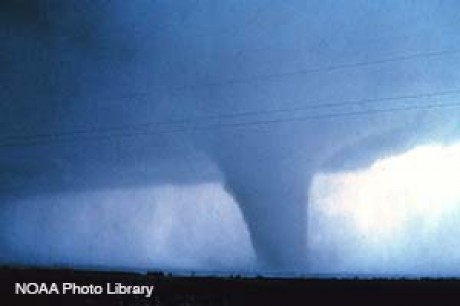Big Energy

The massive tornado that devastated Moore, Okla., in May was classified an EF5, the most destructive. In terms of the energy it released, a fair estimate is nearly 40,000 kilowatt-hours. The average American home uses 940 kwh per month, so energy in an EF5 tornado could power an average home for about 3½ years.
A typical tornado's energy, however, is less than a typical thunderstorm's and much less than a typical hurricane's. A tornado can be more destructive because it's so concentrated. According to Joe Schaefer, director of the national Storm Prediction Center (National Oceanic and Atmospheric Administration and National Weather Service) in Norman, Okla., "Because a tornado is so much smaller than a hurricane, the energy density (energy per unit volume) of a tornado is about six times greater for a tornado than for a hurricane. In terms of energy density, a tornado is the strongest of nature's storms."
NOAA says a hurricane releases some 10 billion kwh in the form of wind energy, about the same as a nuclear bomb. But NOAA qualifies that by pointing out that hurricane energy must be considered at two places: energy released by water condensation and energy generated that maintains the storm's winds.
NOAA's Chris Landsea writes, "The heat released in the condensation process is used to cause rising motions in the thunderstorms and only a small portion drives the storm's horizontal winds." But it's a colossal amount of energy. The energy released in a hurricane's cloud and rain formation activity is equal to 200 times the worldwide electrical generating capacity, Landsea says. The world's electricity consumption (2008) is about 40,000,000 billion kwh or 40 quadrillion kwh or 4 million terawatt-hours.
The kinetic energy a hurricane possesses in the form of wind energy, NOAA says, is equal to about half the worldwide annual electrical generating capacity (about 10,130 billion kw). That's enough to electricity to power all of North Carolina for at least 73 years.
To harness this wind energy would require very strong turbines that not only could move along with the storm, but that also could connect to an equally strong and mobile transmission system. And it would not be one of your welcomed forms of renewable energy.
-
Share this story:


